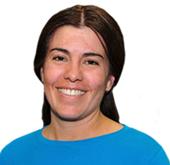Your progress
0%
The activities below represent some strategies your organization can use to assist people with disabilities in accessing financial services.
Use your mouse or keyboard to expand each of the activity headings below. To add an activity to your action plan, select the Add button beside it.

Savings are the financial cornerstone of successful livelihood development. Building up assets through savings puts an individual in a much better position to access mainstream microfinance services and to use microcredit effectively.
CBR can support people with disabilities and their families to save by:
People with disabilities often benefit from positive role-models to inspire them to take up the challenge of self-employment. Successful entrepreneurs with disabilities exist in many communities. If they are included within the network of a CBR, they will not only inspire other people with disabilities, but also change the attitudes of society in general.
CBR
See how a visually-impaired man became a role-model to people with disabilities in his village in China.


Wang, who lives in a remote mountain area of China, lost his sight after an accident. This was a catastrophe for his family, because it meant he could no longer work as a farmer and support them. But through a local CBR group he was taught mobility and independence skills. He received training in massage and a loan to set up his own business in the nearby town.
Wang now runs a thriving massage business, employing 10 other visually-impaired people, which earns him enough to support his family and educate his twin daughters. He has also trained 60 other visually-impaired people in massage, and is seen as a role-model by people with disabilities in his area.
People with disabilities should have access to the same financial services as anybody else. To facilitate access, CBR can:
Learn how women with disabilities were able to gain access to credit in Ethiopia.


In Ethiopia, women with disabilities who are engaged in small business activities have access to credit from a mainstream microfinance institution, the Gasha MFI, thanks to a project of the International Labour Organization (ILO).
The ILO project negotiated an arrangement with Gasha whereby the loan applications of women entrepreneurs with disabilities are assessed and approved using the same criteria as non-disabled applicants. A credit guarantee fund was created to overcome the reluctance of the microfinance institution to make loans to this perceived “high-risk” group of clients. The project also provided training in disability awareness to personnel of the institution. Over 150 women with disabilities have so far received loans from the Gasha MFI.